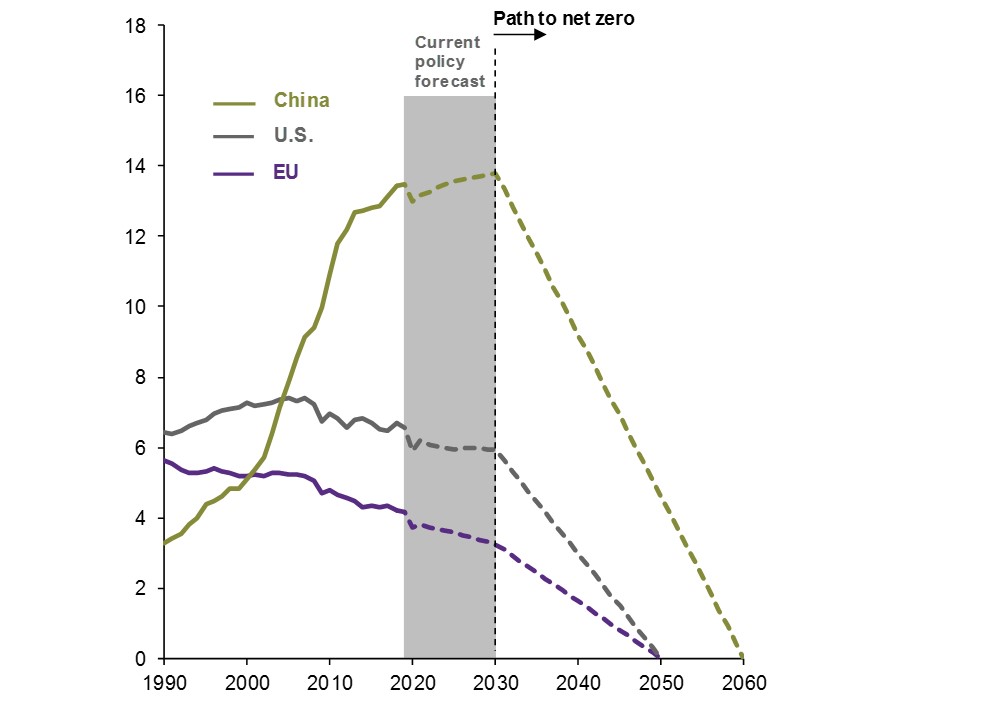Written by: Meera Pandit
Policymakers around the world have set ambitious greenhouse gas (GHG) emissions targets over the next decade and through mid-century. In a recent post, we identified the major sources of carbon emissions and discussed the range of solutions, including energy generation and electrification, efficiency, and emissions offsets. Now the challenge is implementing those solutions, as we discuss in our paper Achieving net zero: The path to a carbon-neutral world. However, policymakers have a number of tools at their disposal:
- Infrastructure – Public infrastructure investment can commit vast resources, take on risk from the private sector, and build scale and consistency. Transportation and electricity account for 54% of U.S. GHG emissions, so encouraging the shift to electric vehicles (EVs) by building charging stations and electrifying public vehicles (buses, police cars, mail trucks), and improving the integration of renewables in the electric grid can make a big dent in emissions.
- Research & Development – According to the IEA, 45% of emissions reductions needed to reach net zero must come from technologies that are not yet commercially available. R&D spending is critical to develop innovations like carbon-neutral steel, cement, and fertilizer; advanced biofuels for airplanes; and direct air capture (DAC) that removes emissions already in the air.
- Subsidies and tax incentives – Fossil fuels are cheap and widespread today in part because they benefited from incentives that helped build scale and reduce costs. Solar and wind are benefiting from subsidies today that have already helped bring costs down and increase adoption.
- Regulation – Tougher fuel, energy, and appliance standards can push companies and consumers to reduce their carbon footprints, as can more stringent codes for buildings and future construction with respect to insulation, material usage, heating and cooling systems, and lighting. Carbon pricing through either taxes or emissions trading schemes (ETS) can incentivize countries to reduce their carbon intensity.
Policymakers will be the key drivers of efforts to mitigate climate change, and given the urgency and sheer scope of the challenge, they will need to pull on all of the levers available. However, the global leaders in green innovation and advancement may be rewarded with significant economic and strategic benefits from a trend that will shape the next decade.
Note: In a three-part series of posts, we will explore the path to achieving net zero carbon emissions and the investment implications and opportunities that arise from it.
Greenhouse gas emissions targets
Billions of tons per year, CO2 equivalent

Source: ClimateActionTracker, J.P. Morgan Asset Management.
Data are as of May 10, 2021.
Related: Disruptive Innovation Could Be Preferred Avenue to Sustainable Investing
